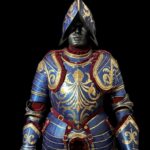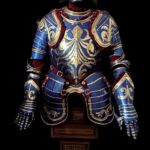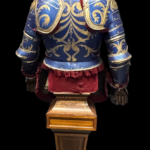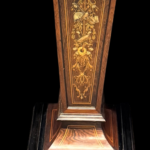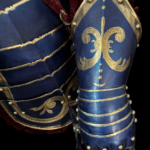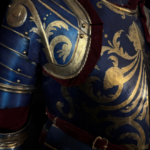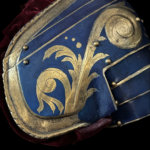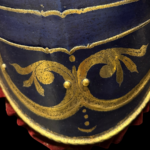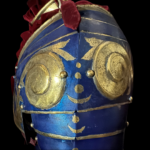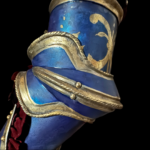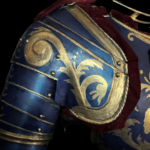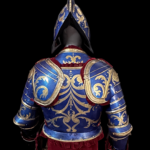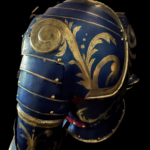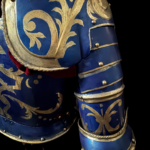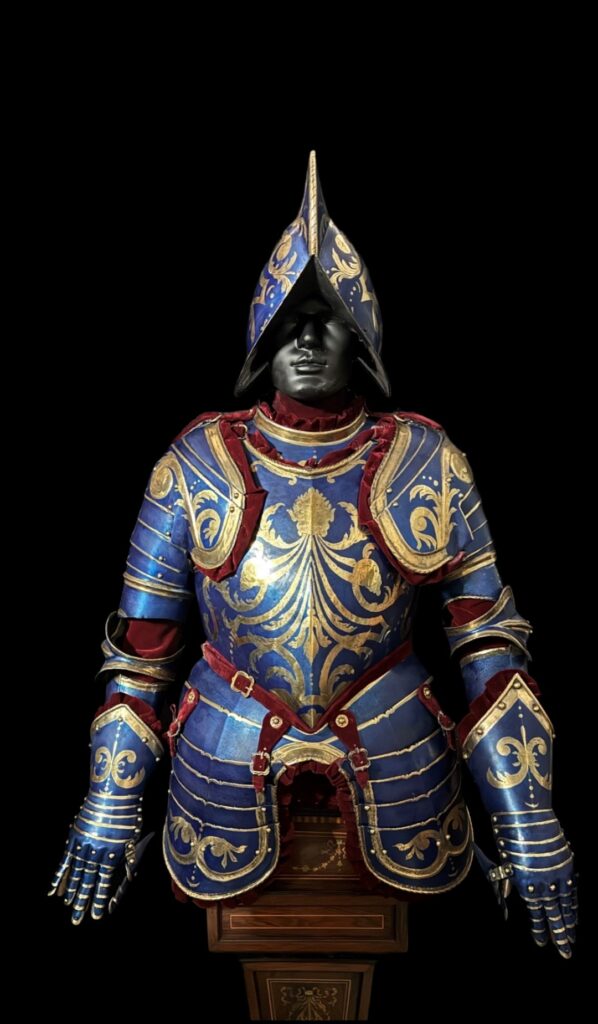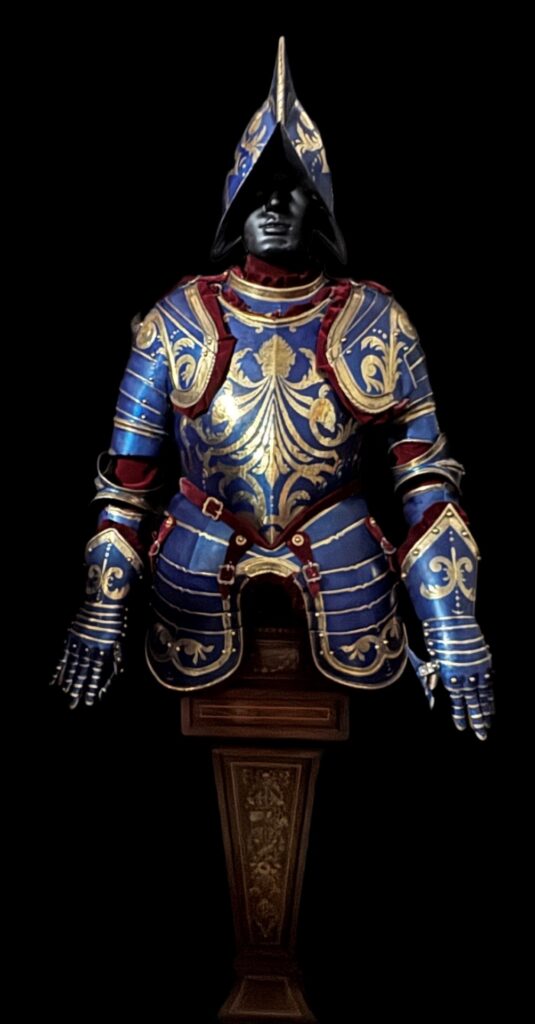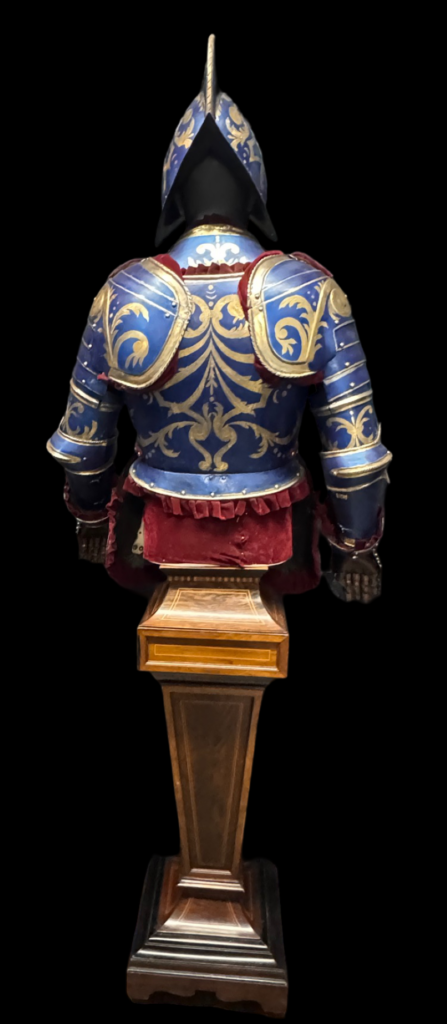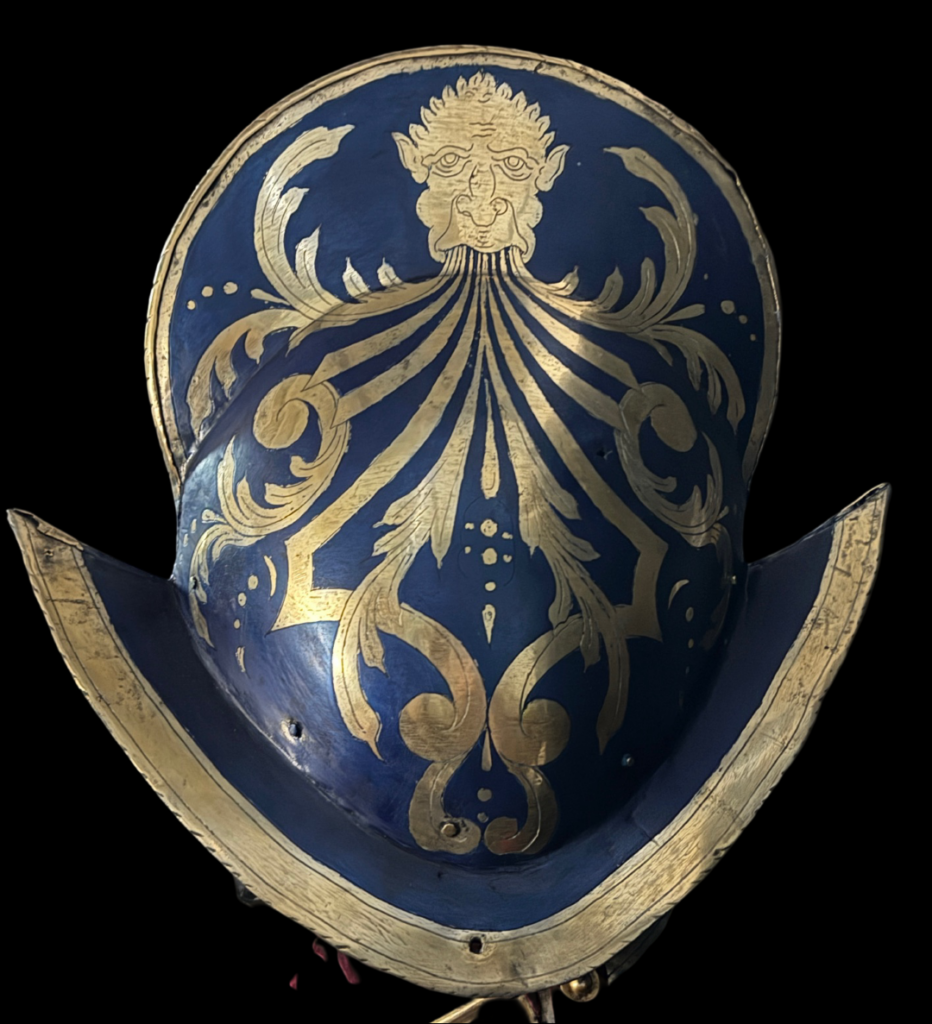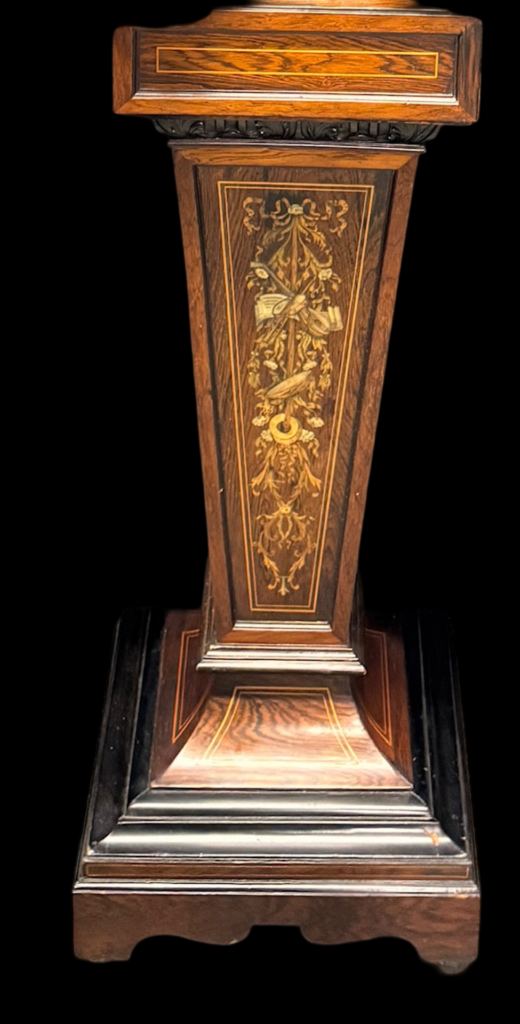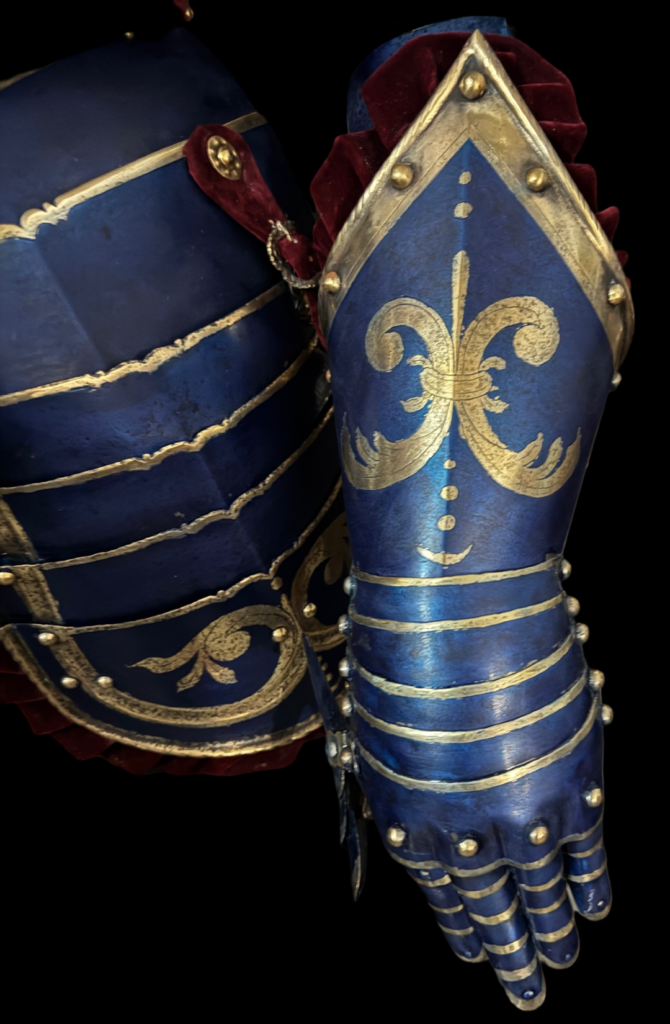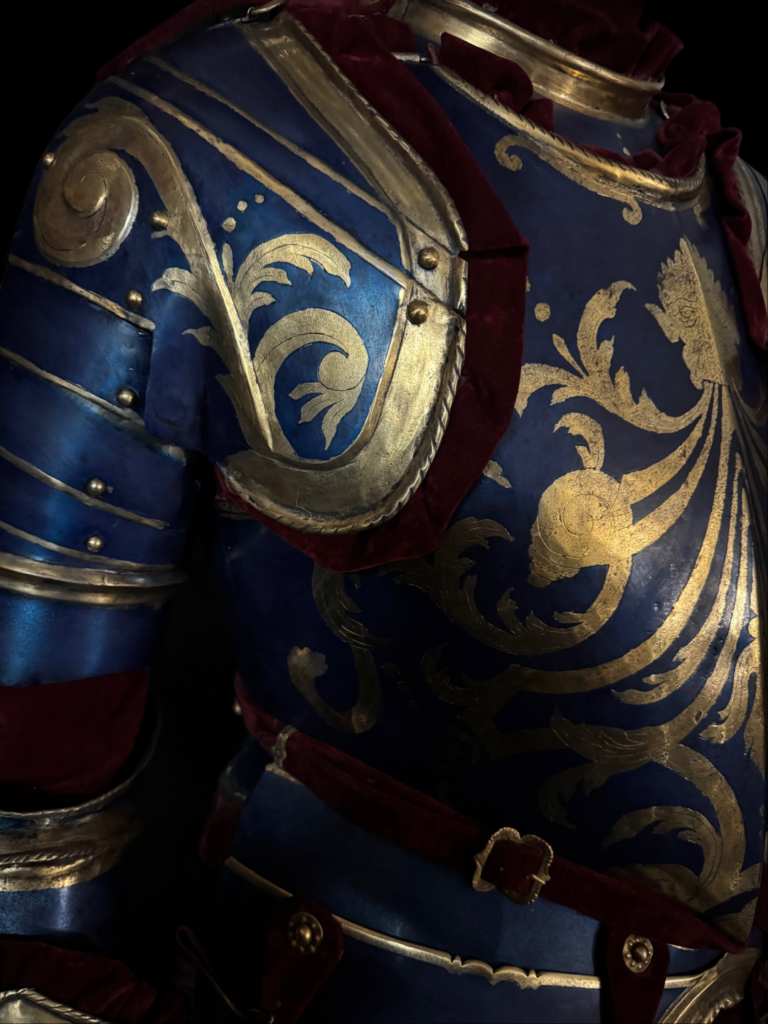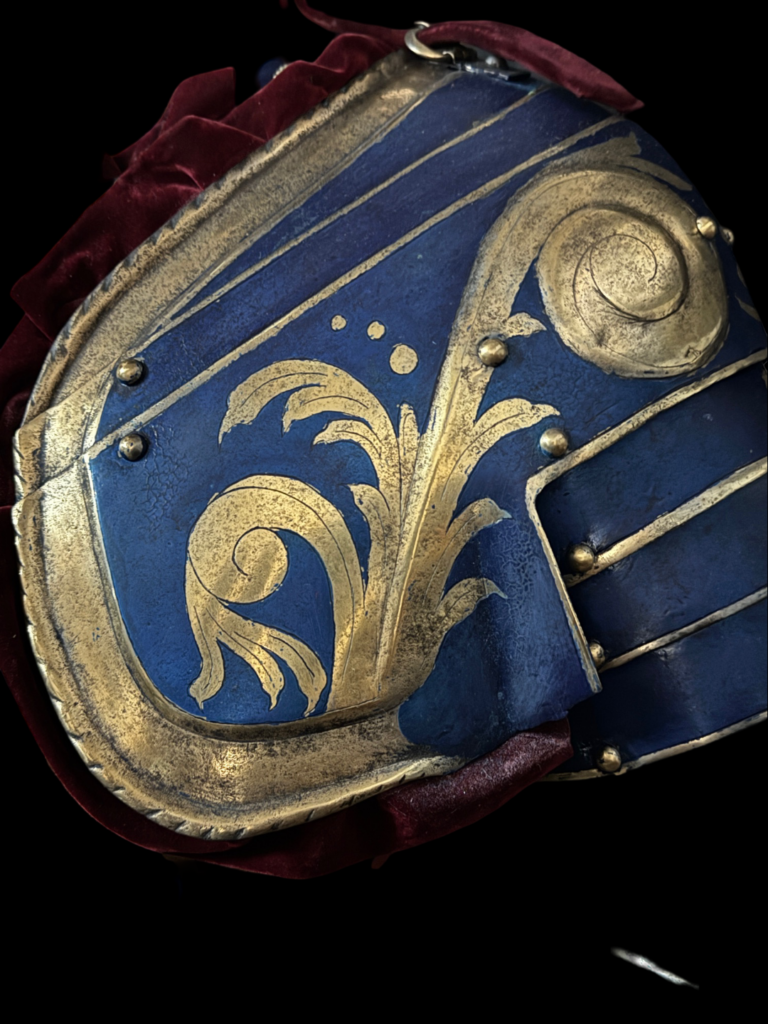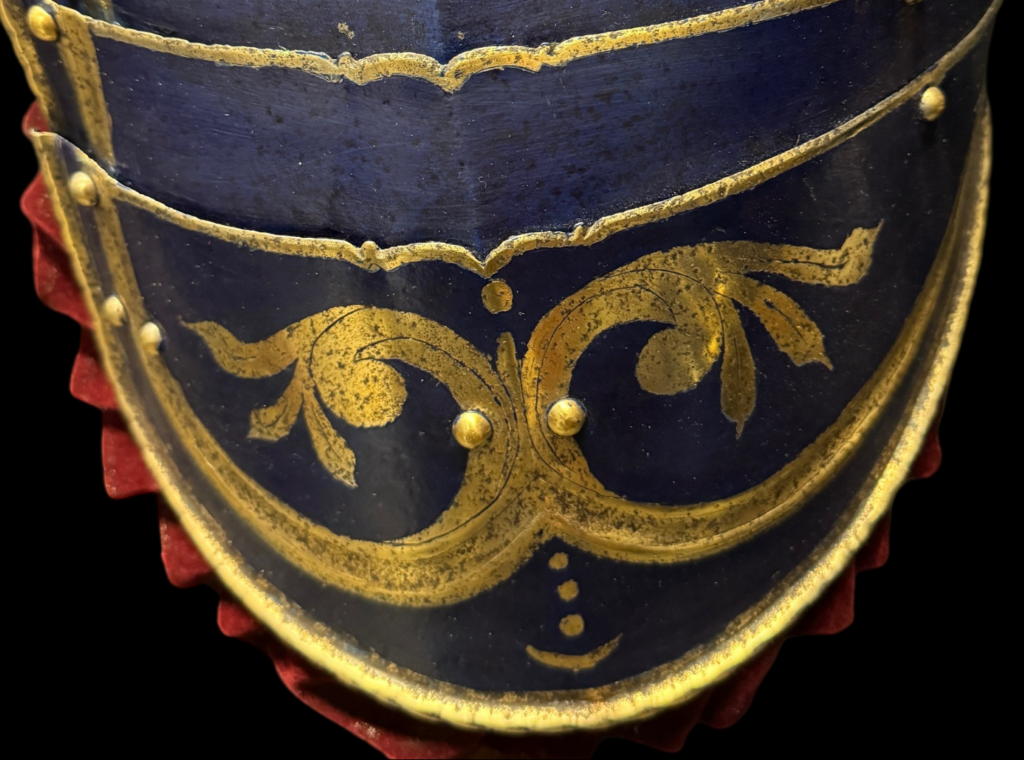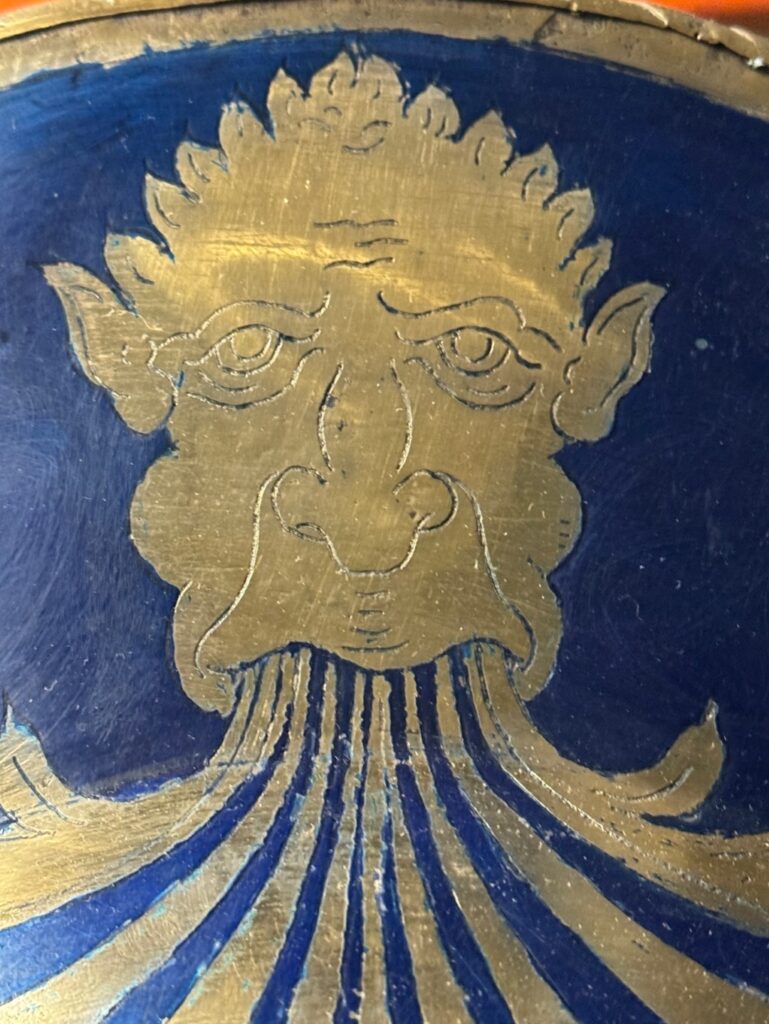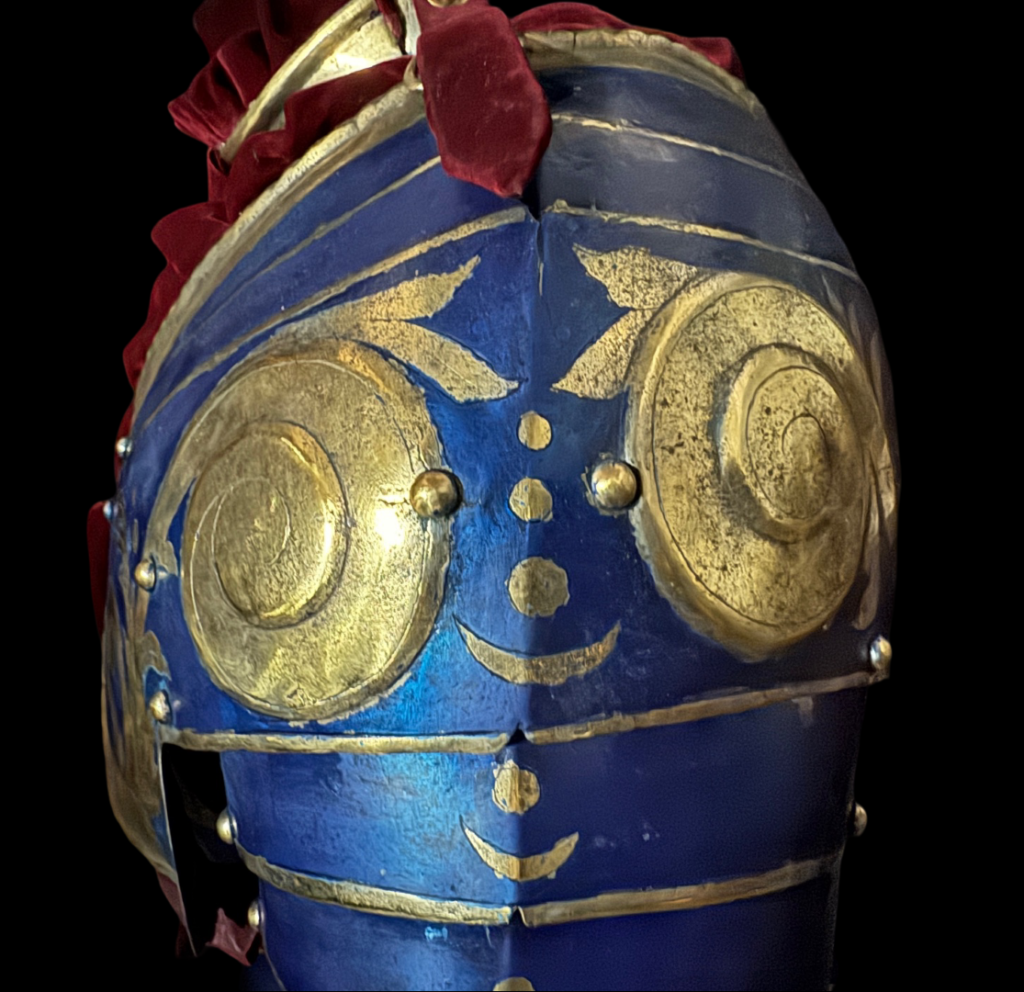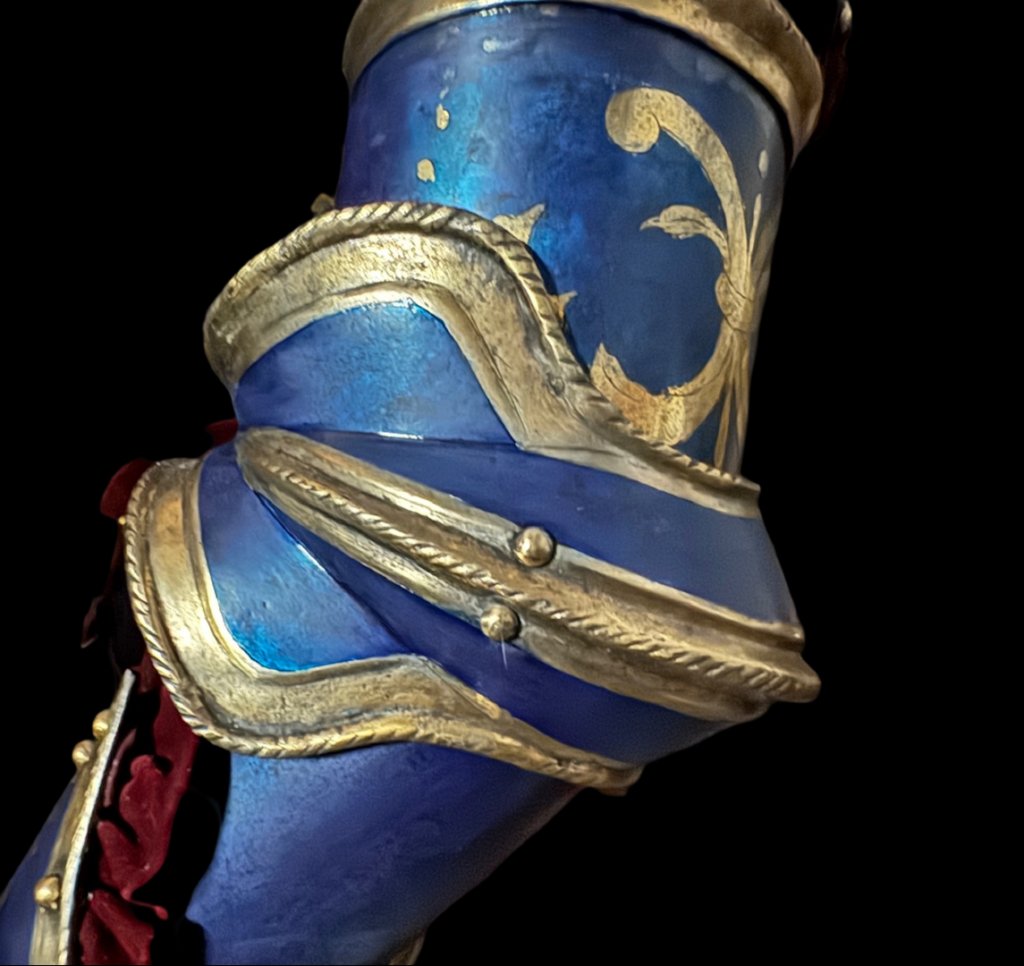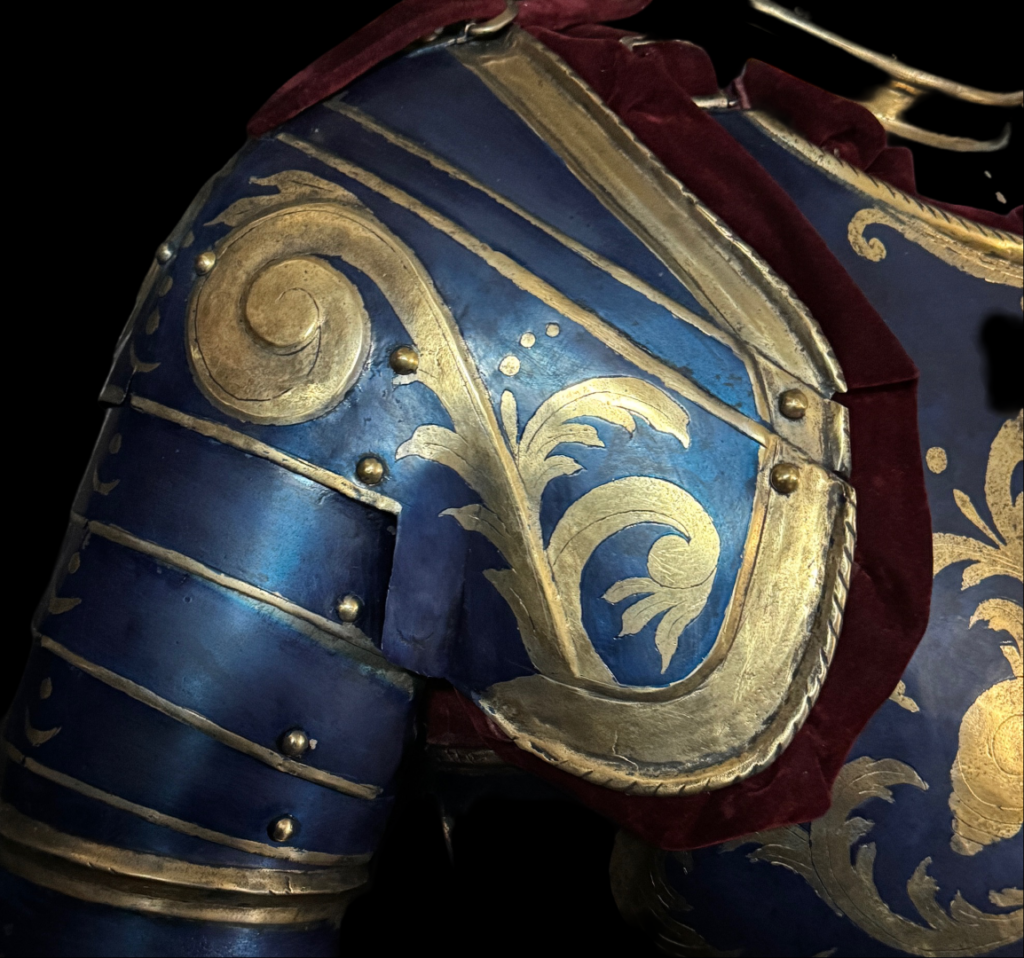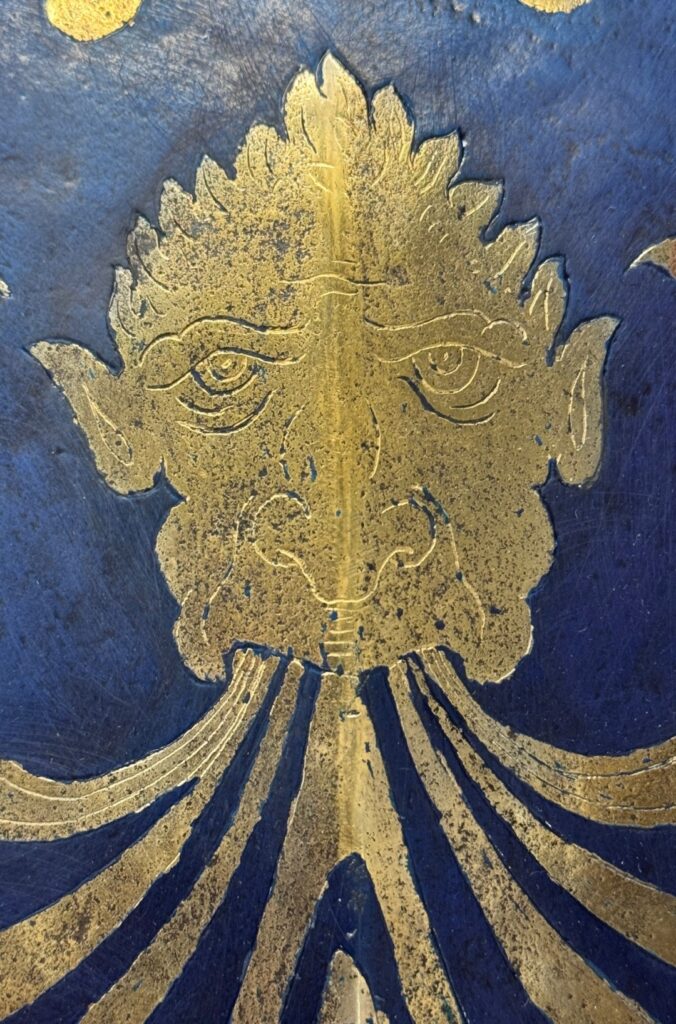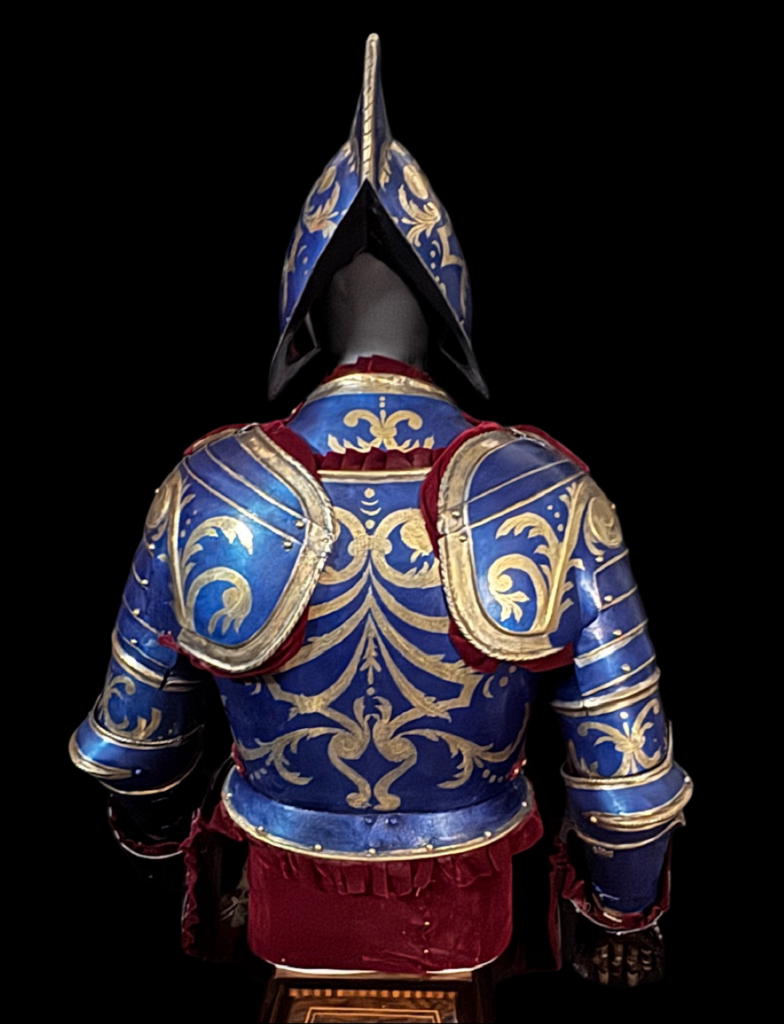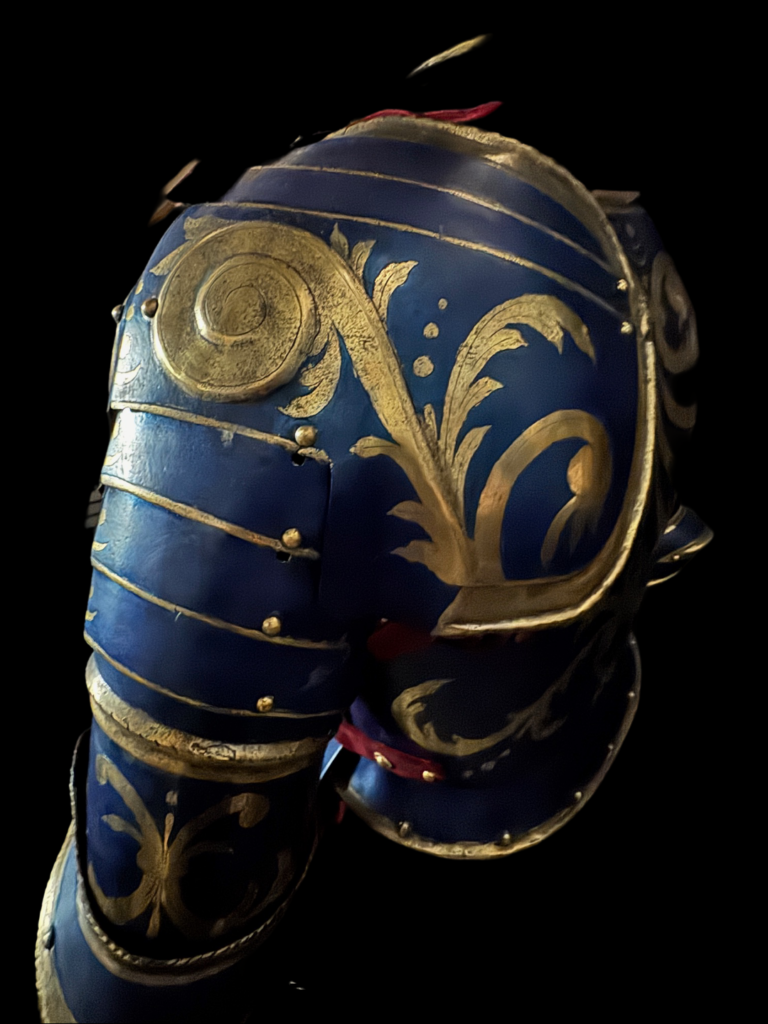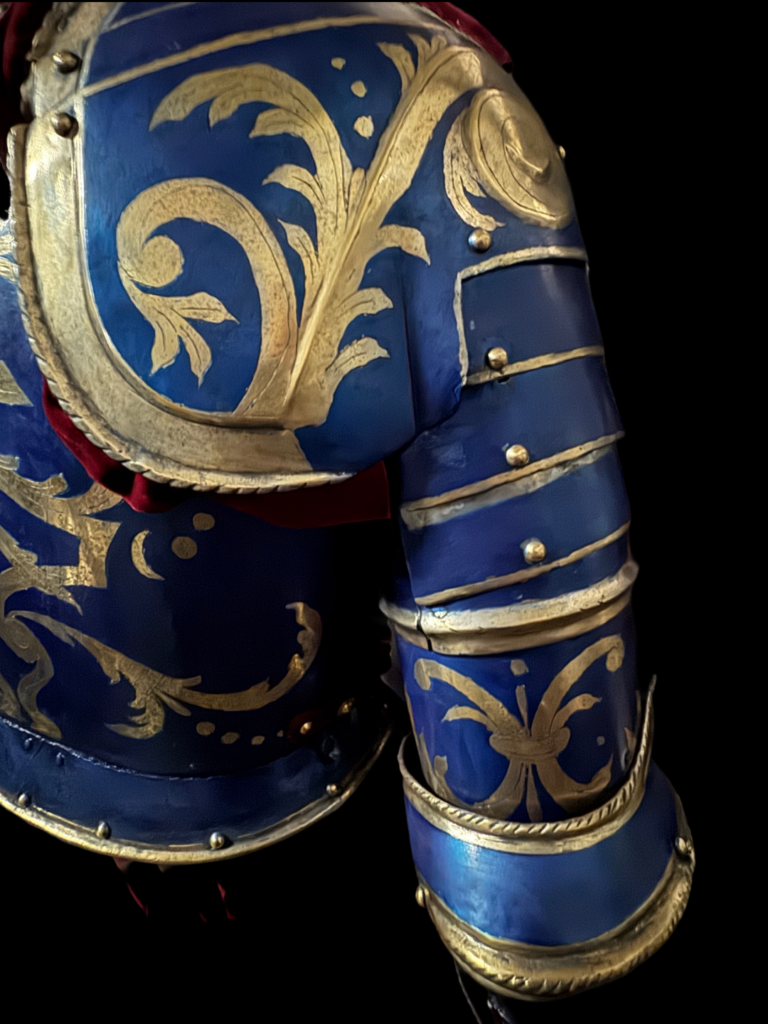1781) AN EXCEPTIONAL AND IMPORTANT SWISS PAPAL (VATICAN) GUARD THREE-QUARTER ARMOR WITH EXCHANGE PIECE CIRCA 1600:
Introduction: Guards for dignitaries, such as noblemen and persons of great wealth, used identical armor for their troops, the same way uniforms are used by the police and military today. Armor was the uniform of their day. One such example is that of the famous, courageous, and highly feared Swiss Papal Guard. Here is a superb and highly sought-after example in museum condition.
Discussion: The Swiss Guard was an absolute terror and greatly feared in the Middle Ages. They were contemporary to the famed German Landsknecht mercenaries. Here is a brief history of how they ended up as the Vatican’s exclusive guard.
The Pontifical Swiss Guard originated with Pope Sixtus IV (1471 — 1484), who allied with the Swiss Confederacy. Pope Julius II, in 1503, asked the Swiss Confederacy to provide the Vatican with 200 Swiss mercenaries as protectors of the Holy See.
The Swiss Guard, ‚ most important defense of the Vatican, was on May 6, 1527, when 147 of 189 Swiss Guards died (some executed just steps from the altar at St. Peter‚ Basilica) fighting the Spanish mercenaries of Holy Roman Emperor Charles V during the Sack of Rome. From his headquarters in St. Onofrio‚ Convent on the Gianicolo hill, Captain General Bourbon launched a series of attacks on Rome, including one at the Torrione Gate (now known as St. Peter‚ Square). The Swiss Guard, in turn, remained firm at the foot of the obelisk to make a stand against the onslaught. Though vastly outnumbered, through monumental efforts, the Swiss Guard allowed Pope Clement VII to escape via the Passetto di Borgo, escorted by the surviving 40 guards. The last stand of the battle was located on the left side of St. Peter‚ Basilica, close to the German Graveyard (Campo Santo Teutonico). Hollywood could not have written a more dynamic situation.
Description: Constructed of a gorget formed of a single plate both front and rear; a breastplate with an outward flanged lower edge of peascod form; and a pair of large, matching, symmetrical pauldrons, each formed of six lames. Fully articulated tubular vambraces, each connected by being fitted at the upper end with a turner, laminated upper and lower cannons with elbow couters. Long tassets. Backplate flanging at the bottom edge to accommodate a culet. A pair of fingered gauntlets decorated en suite. All surfaces of the armor are decorated with deeply incised acanthus scrolls, mostly arranged symmetrically, with a grotesque mask embossed in relief at the top of the breastplate. The decoration is gilt on a dark blue ground. The decoration on Swiss armor was applied in the late 17th century to elements of the late 16th century. Conserved to museum standards.
Comparables: Other armors from this group are displayed at
– Museo Civico Brescia,
– Fitzwilliam Museum, Cambridge,
– Art Institute of Chicago,
– Stibbert Museum, Florence.
Conclusion: This is a historically important armor that would be welcomed at world-class museums and some of the best collections in the world. A complete Papal Swiss Guard Armor such as this seldom makes it to the marketplace. This is only my second complete Swiss armor in 40 years. Here is a unique opportunity to own a piece of European military history!!!*
Contact Me To Get The Latest Lowest Price Possible From The Owner*

